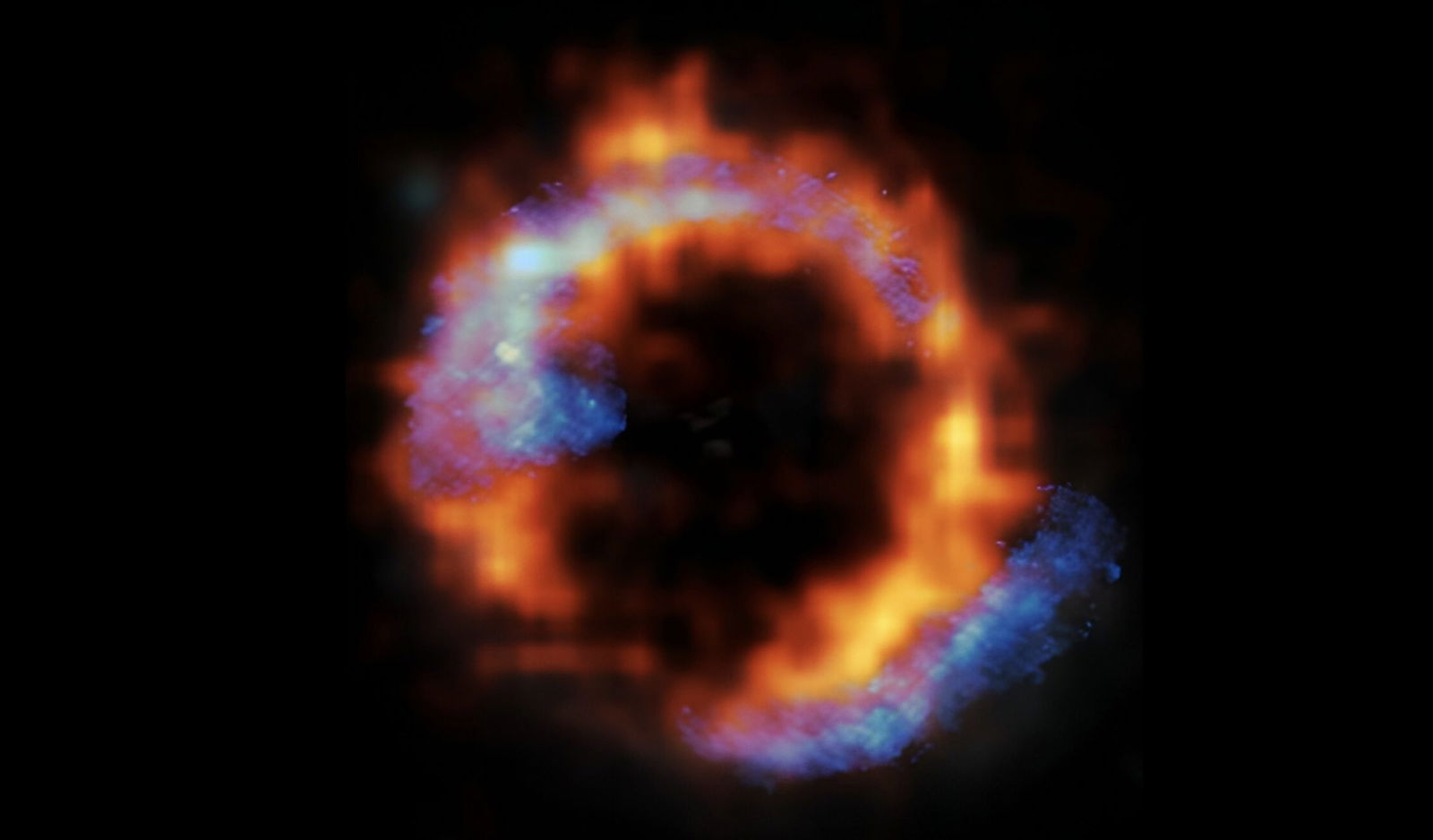Astronomers have observed a hyper-luminous infrared galaxy (HyLIRG) displaying a highly organized rotation, as revealed in new observations of a rare feature known as an “Einstein ring”.
The galaxy PJ0116-24, located 10 billion light-years away from Earth, appears to exhibit characteristics that contradict the standard view that galaxy mergers are required to produce such intense luminosity.
The groundbreaking findings, which are detailed in a newly published paper in Nature Astronomy, seem to point to the occurrence of rapid star formation in HyLIRGs, revealing that it can occur through internal processes. The discovery presents new challenges to existing notions held by astronomers about how such formations occur.
A Rare Luminous Discovery
New imagery released by the European Southern Observatory (ESO) reveals PJ0116-24 glowing 10,000 times brighter than the Milky Way in infrared light. The imagery was made possible with additional observations by the Atacama Large Millimetre/Submillimetre Array (ALMA), which also recently viewed the unique and extremely luminous formation.
In the past, it was believed that the intense luminosity produced by HyLIRGs was exclusively the result of mergers between galaxies, which result in dense regions of gas that are perfect catalysts for the rapid onset of star formation.
Contradicting this view, the new observations of PJ0116-24 appear to show that isolated galaxies can also become HyLIRGs under the right conditions, specifically when internal processes quickly funnel star-forming gas toward their centers.
Cornell astronomer Amit Vishwas, Ph.D., one of the co-authors of the new study detailing the findings, says the researchers combined data from ALMA and the VLT’s new Enhanced Resolution Imager and Spectrograph (ERIS), which allowed ALMA to trace the existence of cold gas, which appears as blue regions in the new image.
Meanwhile, the VLT tracked warm gas, which appears in red, revealing the gas in PJ0116-24 rotates in a surprisingly organized way, seemingly in defiance of the chaotic movement that astronomers would expect following the collision between two galaxies.
A 10-Billion-Year-Old Einstein Ring
The light from PJ0116-24 had traveled close to 10 billion years before astronomers recently observed it, with the addition of a nearer galaxy acting as a gravitational lens. The resultant bending of light from PJ0116-24 by this galaxy’s gravity magnifies it and produces the striking circular feature astronomers call an Einstein ring, also allowing the distant galaxy’s features to be observed in great detail.
The rotating disk scenario, based on work provided by Vishwas, is further supported by data obtained with the newly commissioned ERIS instrument on the VLT. Elements present in PJ0116-24 and other conditions observed by the research team also appear to complement earlier findings made by Vishwas and his colleagues last year, which relied on data obtained by the James Webb Space Telescope involving another much smaller galaxy.
PJ0116-24, by contrast, is significantly more massive and luminous than the galaxy examined in last year’s study.
“Gravitational lensing in both cases enabled us to study the interstellar medium of these galaxies in great detail,” Vishwas recently said. “These new observations are helping us build an argument for the way galaxies evolve and build up—efficiently converting gas to stars in rapid growth spurts separated by long periods of relative calm.”
Vishwas and his team’s findings were recently detailed in a new paper, “Detailed study of a rare hyperluminous rotating disk in an Einstein ring 10 billion years ago,” published on July 15, 2024.
Micah Hanks is the Editor-in-Chief and Co-Founder of The Debrief. He can be reached by email at micah@thedebrief.org. Follow his work at micahhanks.com and on X: @MicahHanks.

